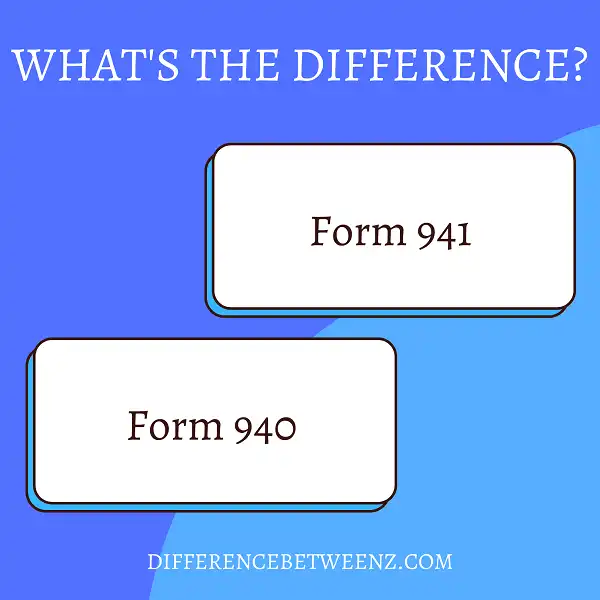When it comes to federal tax forms, there are a lot of them. And each one can be confusing, especially if you’re not familiar with them. So today, we’re going to take a look at two of the most common forms: Form 940 and Form 941. Though they have the same goal—to report taxes that are owed—there are some key differences between them. So let’s dive in and take a closer look!
What is Form 940?
Form 940 is a tax form that U.S. employers must use to report their annual Federal Unemployment Tax Act (FUTA) tax liability. The form is used to calculate the amount of FUTA tax owed, as well as any credits that may be available to offset the tax liability. Form 940 must be filed annually with the Internal Revenue Service (IRS).
- While Form 940 is fairly straightforward, there are a few important things to keep in mind when completing the form. First, Form 940 must be filed even if no FUTA tax is owed for the year.
- If an employer owes FUTA tax, the form must be accompanied by a payment for the full amount owed. Form 940 can be filed electronically or by mail; however, businesses that owe $500 or more in FUTA tax are required to file electronically.
- Completing Form 940 correctly is important, as failure to do so can result in penalties from the IRS. For example, if an employer fails to file Form 940 on time, they may be subject to a late filing penalty of 5% of the unpaid tax liability for each month (or part of a month) that the return is late, up to 25% of the unpaid tax liability.
Therefore, it’s important to make sure Form 940 is filed correctly and on time to avoid any penalties from the IRS.
What is Form 941?
Form 941 is a tax form that businesses use to report their quarterly payroll taxes to the IRS. The form includes information on the total amount of wages paid, the total amount of federal taxes withheld, and the total amount of Medicare and Social Security taxes withheld. Form 941 must be filed by all businesses that have employees, regardless of whether they are for-profit or non-profit organizations. Businesses that fail to file Form 941 may be subject to penalties and interest charges.
Differences between Form 940 and Form 941
The two most common forms used to report federal payroll taxes are Form 940 and Form 941. While both forms are used to report employer tax liability, there are some key differences between the two. Form 940 is used to report federal unemployment tax liability, while Form 941 is used to report Social Security and Medicare taxes. Form 940 is generally filed on a quarterly basis, while Form 941 is filed on a monthly or semi-weekly basis. Finally, Form 940 is filed with the IRS, while Form 941 is filed with the Social Security Administration. While the two forms may seem similar, it’s important to understand the key differences in order to ensure that you are correctly reporting your payroll taxes.
Conclusion
The biggest difference between Form 940 and Form 941 is that employers with more than $500,000 in annual wages pay their share of Social Security taxes on those wages using Form 940. Any employer with less than $500,000 in annual wages pays their Social Security taxes quarterly on Form 941. So if you’re an employer with less than $500,000 in wages paid during the year, remember to file your quarterly tax payments on Form 941 instead of waiting until you file your yearly return on Form 940.


